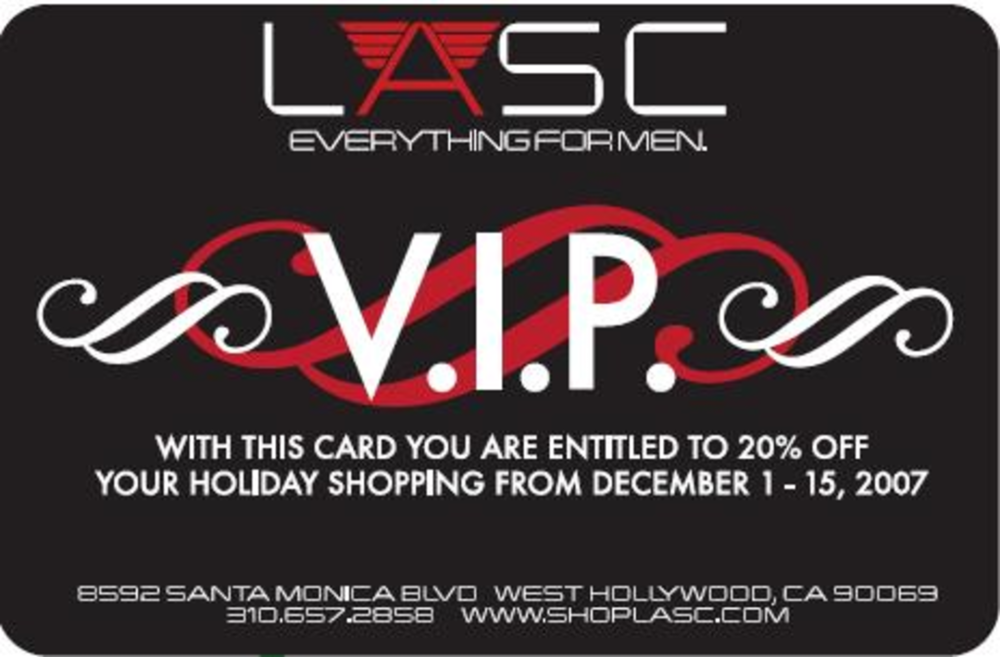From high-end jeans and designer T-shirts to style-conscious suits and ties, it’s clear that men’s fashion is no longer an oxymoron. Instead, it’s a multibillion dollar business: In 2005, according to the NPD Group, men’s apparel sales soared to $53 billion, up 5% from 2004 and growing from $47 billion in 2003. And, as the number of men focusing on how they dress continues to increase, men’s apparel retailers and fashion–marketers are seeking new and creative ways to reach this growing yet notoriously hard-to-reach audience.
One issue that makes men tough to target, marketers say, is that they don’t respond to price offers as easily as women.
“It’s more socially acceptable now for a man to care about his clothes,” says Jared Blank, VP of client solutions at Epsilon. “[But] men are not necessarily price-conscious — they are more interested in learning about fashion. So, it’s better to send them editorial content rather than discounts.”
LASC, a men’s apparel retailer in Los Angeles, has also found that its male shoppers do not respond to sales. The retailer, which uses e-mail marketing aggressively, finds that providing editorial content about the entire fashion experience gets more attention from men looking to buy apparel.
“You have to be creative and look for new ways to get [men] into the store,” says Kenneth Loo, LASC director of operations and marketing, who adds that special events offer opportunities to directly interact with customers.
“We often throw parties, because they create a more fun place to hang out and brings the experience of fashion to life,” he explains.
Quiksilver, a boardsports-focused casual menswear company, also uses events and word of mouth to tap into men’s social and fashion desires and tie into their brand. This past summer, the firm promoted its new men’s brand with dozens of community-based events in Venice, California.
“We wanted to reach guys who grew up with the Quiksilver brand but are older now, have families and need to get dressed up for work,” says Joshua Katz, director of communications at Quiksilver. “So we created events around the core coastal lifestyle values, but with a more mature appeal.”
Marketers are also trying to go where men go. For example, research has shown that men are less likely than women to do their own laundry, but they often send their tailored shirts regularly to the dry cleaners. The Hanger Network has found that billboards on eco-friendly hangers reach a man right when he’s getting dressed. “The average man who works in an office wears a dress shirt four days a week and goes to the dry cleaners twice a month,” says Bob Kantor, CEO of Hanger Network.
When it comes to apparel, one of the big tricks of targeting men is also attracting women. While men may be more interested in fashion these days, women are still often the buyers of men’s clothes and are a very different audience. “The interesting twist is that retailers need to market to men and women,” Blank explains. “This is tricky, as men and women respond very differently. Marketers have to think about what women find attractive about men’s clothes.”
Ultimately, he continues, targeting fashion to a growing population of style-conscious men means a new audience but new challenges. “[Marketers have traditionally] focused their attention on women,” says Blank, “but now that men care about fashion, retailers and brands have a new opportunity to market to this audience.”








